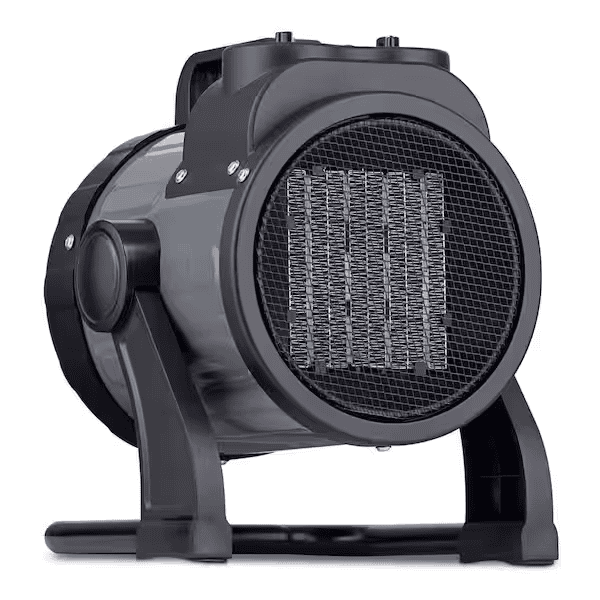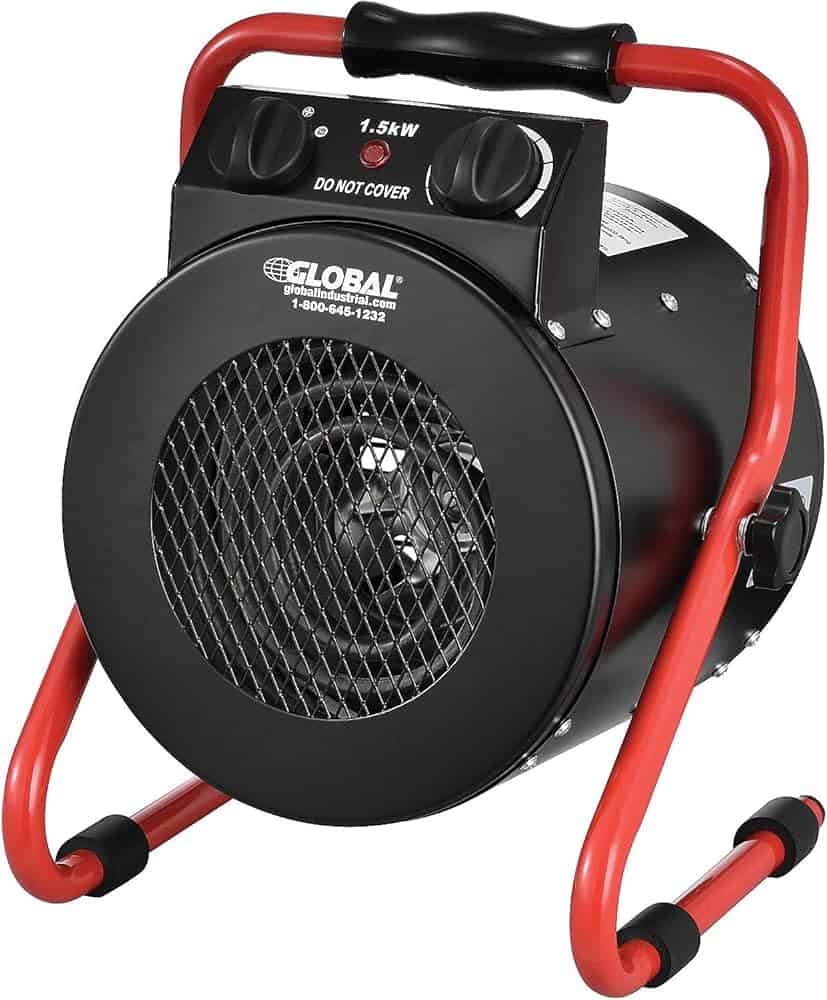Electric garage heaters can be a lifesaver during cold months, but when they stop working, it can leave you out in the cold. Troubleshooting a 120V electric garage heater often involves checking the power supply, inspecting the heating element, and ensuring proper voltage. These steps can help you get your heater back up and running quickly.
Before you start any repairs, make sure your heater is unplugged. Safety should always be your top priority when dealing with electrical appliances. Check that your outlet is supplying the correct voltage. A 120V heater needs a standard household outlet. Using the wrong voltage can damage your heater or create a fire hazard.
Here’s a quick guide to common issues and their fixes:
| Problem | Possible Solution |
|---|---|
| Heater won’t turn on | Check power cord and outlet |
| No heat produced | Inspect heating element |
| Fan not working | Clean or replace fan |
| Inconsistent heating | Thermostat may need adjustment |

Troubleshooting Your 120V Electric Garage Heater
A 120V electric garage heater can be a lifesaver during cold winter months, but like any appliance, it can sometimes run into problems. Before you call a repair technician, try these troubleshooting steps to see if you can fix the issue yourself.
Safety First!
- Always disconnect the heater from the power source before performing any maintenance or troubleshooting.
- Never attempt to repair the heater if you are not comfortable working with electrical appliances.
Common Problems and Solutions
1. Heater Not Turning On
- Check the power supply: Make sure the heater is plugged in properly and the outlet is working. Test the outlet with another device, or use a voltage tester to confirm power.
- Inspect the circuit breaker: Check your electrical panel for a tripped circuit breaker. Reset it if necessary.
- Examine the power cord and plug: Look for any damage to the cord or plug. If you find any, replace the cord or plug before using the heater again.
2. Heater Not Producing Enough Heat
- Clean the heater: Dust and debris can accumulate on the heating element and reduce its efficiency. Use a vacuum or compressed air to clean the heater.
- Check the thermostat: Make sure the thermostat is set to the desired temperature. If the thermostat is faulty, you may need to replace it.
- Inspect the heating element: If the heating element is damaged or burned out, it will need to be replaced.
3. Heater Making Strange Noises
- Tighten loose screws: Loose screws can cause rattling or vibrating sounds. Check all the screws on the heater and tighten them as needed.
- Lubricate the fan motor: If the fan motor is making a squeaking or grinding noise, it may need lubrication. Consult your owner’s manual for instructions on how to lubricate the motor.
4. Heater Overheating
- Ensure proper ventilation: Make sure the heater has adequate space around it for proper airflow. Do not block the air intake or outlet vents.
- Check for obstructions: Make sure there are no objects blocking the heater or the airflow around it.
- Inspect the thermal fuse: If the heater overheats, the thermal fuse may trip. This is a safety feature that prevents the heater from causing a fire. If the thermal fuse has tripped, you will need to replace it.
Table: Troubleshooting 120V Electric Garage Heaters
| Problem | Possible Causes | Solution |
|---|---|---|
| Heater not turning on | No power supply, tripped circuit breaker, damaged cord or plug | Check power supply, reset circuit breaker, replace cord or plug |
| Not enough heat | Dirty heater, faulty thermostat, damaged heating element | Clean heater, check thermostat, replace heating element |
| Strange noises | Loose screws, dry fan motor | Tighten screws, lubricate fan motor |
| Overheating | Poor ventilation, obstructions, tripped thermal fuse | Ensure proper ventilation, remove obstructions, replace thermal fuse |
Maintaining Your Garage Heater
Regular maintenance can help prevent problems and extend the life of your garage heater. Here are some tips:
- Clean the heater regularly: Dust and debris can build up and reduce the heater’s efficiency. Clean the heater at least once a year, or more often if it is used frequently.
- Inspect the cord and plug: Check the cord and plug for any damage. Replace them if necessary.
- Check the thermostat: Make sure the thermostat is working properly.
- Have the heater serviced by a qualified technician: It’s a good idea to have your heater serviced by a qualified technician every few years to ensure it is in good working order.
Understanding Electric Garage Heaters
Electric garage heaters provide efficient warmth for your workspace. They come in various types and must adhere to specific safety standards.
Types of Electric Heaters
Electric garage heaters typically fall into two main categories: infrared and ceramic. Infrared heaters use electromagnetic waves to warm objects directly. They heat up quickly and are ideal for spot heating.
Ceramic heaters use electric coils to warm ceramic plates. They distribute heat evenly throughout the space. These heaters are effective for larger areas.
Both types come in different sizes and power ratings. Most 120V models range from 1500 to 5000 watts. Choose based on your garage size and insulation level.
Safety Features and Building Codes
Electric heaters must have built-in safety features. Look for models with tip-over protection and automatic shut-off. Overheat protection is also crucial.
Your heater should be UL listed or ETL certified. This ensures it meets safety standards. Check local building codes before installation. Some areas require hardwired heaters for garages.
Proper electrical capacity is essential. A dedicated circuit may be necessary for higher-wattage units. Always plug directly into a wall outlet. Avoid extension cords.
| Feature | Infrared Heaters | Ceramic Heaters |
|---|---|---|
| Heating Method | Electromagnetic waves | Heated ceramic plates |
| Warm-up Time | Fast | Moderate |
| Heat Distribution | Directional | Even |
| Best For | Spot heating | Whole space heating |
Installation and Maintenance
Proper installation and regular upkeep are crucial for the safe and efficient operation of your 120V electric garage heater. These steps ensure optimal performance and longevity.
Proper Installation Procedures
Choose a suitable location for your heater, away from flammable materials and moisture sources. Mount the unit securely on a wall or ceiling, following the manufacturer’s guidelines. Ensure proper clearance around the heater for air circulation.
Connect the heater to a dedicated circuit with adequate amperage. Use the correct wire gauge and a circuit breaker rated for the heater’s power requirements. Install a thermostat if not built-in.
Check local building codes and obtain necessary permits before installation. Consider hiring a licensed electrician for complex setups.
Test the heater after installation. Monitor for unusual noises, smells, or performance issues during the first few uses.
Routine Maintenance and Care
Regular maintenance keeps your garage heater running efficiently and safely. Clean the unit at least once a year, preferably before the heating season starts.
Use a vacuum with a brush attachment to remove dust from the heater’s exterior and vents. Wipe down the housing with a damp cloth. Ensure the heater is unplugged and cool before cleaning.
Inspect wiring connections annually for signs of wear or damage. Tighten any loose connections. Check the heating elements for corrosion or damage.
| Maintenance Task | Frequency |
|---|---|
| Exterior cleaning | Monthly |
| Deep cleaning | Annually |
| Wiring inspection | Annually |
| Thermostat check | Seasonally |
Lubricate fan motors if required by the manufacturer. Replace any worn parts promptly. Keep the area around the heater clear of debris and stored items.
Troubleshooting Common Issues
Electric garage heaters can encounter several problems. Addressing these issues promptly ensures optimal performance and extends the life of your unit.
Heater Won’t Turn On
If your 120V electric garage heater fails to start, check the power supply first. Ensure the unit is properly plugged in and the outlet has power. Inspect the cord for damage.
Next, examine the fuse or circuit breaker. A blown fuse or tripped breaker can prevent the heater from operating. Replace the fuse or reset the breaker if needed.
Check the thermostat settings. A malfunctioning thermostat may not signal the heater to turn on. Try adjusting the temperature setting to see if it responds.
If these steps don’t work, the issue might be internal. Look for loose wiring connections or a faulty on/off switch. Be cautious when inspecting internal components and consider professional help if you’re unsure.
Insufficient Heating
When your heater runs but doesn’t warm the space adequately, start by checking the thermostat. Ensure it’s set to the desired temperature and functioning correctly.
Inspect the heating elements. Damaged or dirty elements can reduce heating efficiency. Clean them gently or replace if necessary.
Consider the size of your garage. An undersized heater may struggle to warm the entire space. Use this table to guide heater selection:
| Garage Size (sq ft) | Recommended Heater Wattage |
|---|---|
| Up to 250 | 3000-4000W |
| 250-500 | 4000-5000W |
| 500-750 | 5000-6000W |
Check for air leaks around windows and doors. Proper insulation helps maintain temperature and improves heater efficiency.
Overheating and Safety Shutoff
Overheating can trigger the safety shutoff mechanism in your heater. This feature prevents damage and reduces fire risk.
Clear any obstructions around the heater. Maintain at least 3 feet of clearance on all sides for proper airflow.
Clean or replace air filters regularly. Clogged filters restrict airflow, causing the unit to overheat.
Check the fan operation. A malfunctioning fan can lead to heat buildup. Listen for unusual noises or reduced airflow, which may indicate fan issues.
If the heater keeps shutting off, the thermal cutoff switch might be faulty. This safety device needs replacement if it’s not functioning correctly.
Optimizing Heater Efficiency
Proper setup and management of your 120V garage heater can significantly boost its performance. Let’s explore key strategies to maximize efficiency and ensure optimal heating.
Selecting the Correct Breaker Size
Choosing the right breaker size is crucial for your 120V garage heater’s operation. Most 120V heaters draw about 12.5 amps at 1500 watts. For this load, a 20-amp circuit breaker is ideal.
Using a 15-amp breaker may cause frequent tripping. This interrupts heating and can be frustrating in cold weather. A 20-amp breaker provides a safety margin without overloading your electrical system.
Always check your heater’s specifications. Match the breaker size to its amperage draw. This ensures safe and efficient operation.
Improving Energy Efficiency
To boost your garage heater’s energy efficiency, start with proper insulation. Seal gaps around windows and doors to prevent heat loss. Add insulation to walls and ceilings if possible.
Use a programmable thermostat to control temperatures. Set it lower when you’re away to save energy. Raise it before you plan to use the garage.
Consider these tips to further improve efficiency:
- Clean or replace filters regularly
- Keep the area around the heater clear
- Use a fan to distribute heat evenly
| Energy-Saving Measure | Potential Savings |
|---|---|
| Proper insulation | Up to 15% |
| Programmable thermostat | 10-15% |
| Regular maintenance | 5-10% |
In cold climates, supplement your 120V heater with a 240V model for more power. This can heat larger spaces more effectively. Remember to upgrade your electrical system if needed.
Frequently Asked Questions
Electric garage heaters can encounter various issues. Proper troubleshooting helps identify and resolve common problems quickly. Let’s address some key questions about 120V garage heater maintenance and repairs.
Why is my garage heater not heating effectively?
Poor heating often stems from clogged filters or dirty components. Clean the heater thoroughly using a vacuum with a brush attachment. Remove dust from internal parts and wipe surfaces with a damp cloth.
Check for blocked vents or obstructions near the heater. Ensure proper airflow around the unit for optimal performance.
What steps can I take if my electric heater is not turning on?
First, check the power supply. Ensure the heater is plugged in and the outlet works. Inspect the cord for damage.
Next, examine the thermostat settings. Adjust it higher to trigger the heater. If issues persist, the thermostat may be faulty.
How do I diagnose electrical issues with my 120v garage heater?
Use a multimeter to test voltage at the outlet and heater connections. Look for loose or disconnected wires inside the unit. Secure any loose connections.
Check the heating element’s continuity. A broken element will need replacement.
What are common causes for an electric garage heater to stop working?
Frequent causes include:
- Faulty thermostats
- Blown fuses or tripped circuit breakers
- Worn heating elements
- Clogged air filters
- Malfunctioning fans
Identify the specific issue to determine the appropriate fix.
How can I reset my garage heater if it’s not functioning properly?
To reset your heater:
- Turn off the power at the circuit breaker
- Unplug the unit
- Wait 15 minutes
- Plug it back in
- Turn on the circuit breaker
- Restart the heater
This process can resolve minor glitches or safety shutoffs.
What maintenance checks should be performed regularly on a 120v electric garage heater?
Perform these tasks monthly:
- Clean or replace air filters
- Vacuum dust from vents and internal components
- Check electrical connections for tightness
- Inspect the power cord for damage
- Test the thermostat accuracy
Regular maintenance prevents many common issues and extends your heater’s lifespan.
| Maintenance Task | Frequency | Tools Needed |
|---|---|---|
| Clean air filters | Monthly | Vacuum, brush |
| Check connections | Monthly | Screwdriver |
| Inspect cord | Monthly | Visual inspection |
| Test thermostat | Seasonally | Thermometer |
| Deep clean interior | Annually | Vacuum, cloth |







